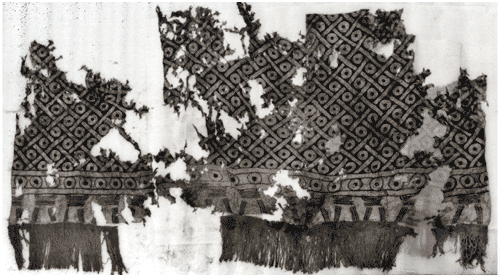|
|
The
Conservation of the Archaeological Materials
 One
of the aspects that makes the discovery of these offerings so extraordinary
is the exceptional state of preservation of the objects, especially the
vegetal remains, the textiles, the wooden figures, and the amate paper
(pre-Hispanic paper made from the bark of the amate tree), among others. One
of the aspects that makes the discovery of these offerings so extraordinary
is the exceptional state of preservation of the objects, especially the
vegetal remains, the textiles, the wooden figures, and the amate paper
(pre-Hispanic paper made from the bark of the amate tree), among others.
This
has made it possible for us to examine ritual elements, which we had previously
only seen depicted in the codices. Furthermore, they give us an idea of
how some of the offerings found in the Great Temple, where perishable
materials have vanished with the passage of time, may have looked. Because
of their importance, these types of objects required extremely special
care whereby an in situ conservation project, carried out by a team of
specialists led by restorer Lourdes Gallardo, was initiated alongside
the excavation. As for the work that was carried out, it was extremely
meticulous and often involved parts of the offering being removed en masse
so that the process of restoration could be conducted in the
laboratory under optimal conditions. In this way the objects could be
stabilized without having to go through a sudden change from the condition
in which they had been found. The original state and condition of parts
of the offerings were altered as little as possible keeping in mind the
possibility of analyzing them in the future. The task carried out by conservation
specialists is one of the most meticulous, and does not end with the excavation
process. Instead, in many cases the specialists must work with the objects
for long periods of time, sometimes years, after they have been excavated.
Thanks to their work we are able show museum visitors many of the objects
which have been found during the excavations.

Why
were textiles, paper, and other perishable objects found in perfect condition?
According to restorer Lourdes Gallardo, the exceptional state of preservation
of the materials found is due to the fact that the stone box in which
the offering had been placed was sealed. No air or light had gotten in,
certain materials that inhibit the development of microorganisms such
as copper were present, and the microenvironment inside the box was in
a state of equilibrium.
Translated
from Spanish by Annis Graetz.
|
|





